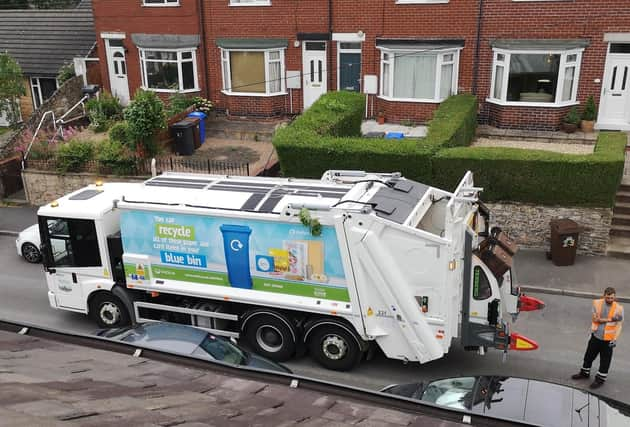Environment: Vital that citizens hold the council to account to implement these plans


With heatwaves in most of Europe, farmers are struggling to produce the crops that are usually exported to us. Holidaymakers in Rhodes came face to face with what a Climate Emergency means as they fled the wildfires. I hope my statement injected some urgency into the committee.
At the meeting, the Transport, Regeneration and Climate Committee agreed to “The ‘Climate Decarbonisation Routemaps: Our Council and the way we Travel”. The 10 Point Plan for Climate Action agreed in March 2022 committed the Council to develop route maps to decarbonisation across seven areas:
Our Council,
The Way We Travel;
Our Homes;
Energy generation and storage;
Our Land;
Our Business and Economy
What We Buy, Eat and Throw Away
Advertisement
Hide AdAdvertisement
Hide AdThe first route map concentrates on travel and reducing the Council’s emissions.
The report recognises that billions of pounds are needed to get the city to Net Zero. Unless policies change this will not be forthcoming from Tory or Labour Governments in the near future, which makes the 2030 Net Zero target look like an impossible aspiration.
We need to retrofit all our homes and workplaces so they are properly insulated and powered by renewables (such as heat pumps or district heating). We need to revolutionise our transport system to enable everyone to get around by using public transport or active travel (including walking), we need to invest in renewable power stations such as wind and solar farms and battery storage. We need to be planting millions of trees. We need to transform our agriculture system so we are much more self-reliant, nature friendly and can produce the food we need instead of relying on imports. We only have six and a half years to do all this if we are to get to net zero by 2030.
The Council is to be commended for showing what needs to be done with the resources they have, to decarbonise as much as possible.
Advertisement
Hide AdAdvertisement
Hide AdBut the Council is underestimating the threats we face from the climate crisis. The report informs us that Sheffield is likely to experience
• Wetter winters and more intense rainfall events resulting in increased surface water that exceeds the capacity of drainage systems, and lead to more frequent, severe flash flooding.
• Warmer, drier summers will affect the quality and quantity of food and water supply, and damage buildings and infrastructure.
• Changing climate will hugely impact the plants and wildlife we know and love.
Advertisement
Hide AdAdvertisement
Hide Ad• Increased energy demand and reducing fossil fuels leads to further price increases unless we see a drastic shift to renewable energy and increased energy efficiency.
The above is already happening. In the future, we need to prepare for much worse conditions, especially if tipping points are reached that cause dramatic changes to our climate.
The Council’s first principle is an inclusive, just and fair transition that will guide all their actions. So what are they going to do?
By 2030, Sheffield City Council aims to have reduced its emissions by 95%. There are seven objectives:
Advertisement
Hide AdAdvertisement
Hide AdA. Domestic housing stock is decarbonised by improving the building fabric, reducing consumption and transitioning to renewable energy.
B. Other buildings are decarbonised by improving fabric, reducing consumption, and transitioning to renewable energy.
C. Vehicles are decarbonised by reducing mileage and replacing the fleet with electric vehicles.
D. Street lighting is decarbonised by reducing energy consumption.
Advertisement
Hide AdAdvertisement
Hide AdE. Land management supports the Council and city-wide net zero target.
F. Purchasing and decision-making will support the Council’s journey to net zero.
G. Employees will be trained in climate literacy.
The Council’s housing stock makes up 89% of Council emissions, with 5% from the Council’s other buildings. Streetlighting and vehicles each make up 3% each.
The report rightly recognises the importance of Climate Literacy training for all Council employees. Every employer should follow suit and make this an essential part of its training programme.
Advertisement
Hide AdAdvertisement
Hide AdSheffield City Council and its two principal contractors; Amey and Veolia, operate 1,145 vehicles which are responsible for 3% of the Councils emissions:
• The council operates around 920 vehicles, the majority of which are vans, followed by cars and minibuses. 71 (8%) run on electricity.
• Amey operates 170 vehicles to deliver the citywide Streets Ahead service. Most of these are vans and trucks, but they also have gritters and sweepers.
• Veolia operate 60 vehicles, mostly refuse lorries, two of which are electric.
Advertisement
Hide AdAdvertisement
Hide AdTransport is a small percentage of council emissions, but it is the third largest source of emissions in the city. The council aims to lead by example by decarbonising its own vehicles, encouraging its contractors and partners, and inspiring citizens to act too. Decarbonising vehicles will lower fuel costs, reduce vehicle maintenance costs, and improve air quality.
It’s vital that citizens hold the Council to account to implement these plans, but also change the political climate, so that Governments realise this should be the top priority if we are to avoid climate catastrophe.